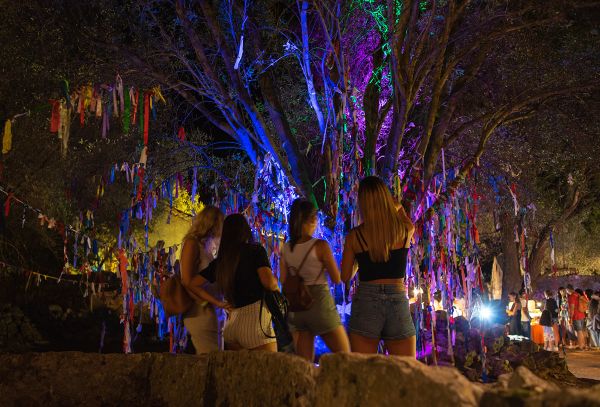At the end of an epic battle, the rebel Enceladus was defeated by Athena, the Greek goddess of wisdom and justice, and plunged into the sea. It is said to lie where Sicily is today, with its head right under Etna. According to legend, the volcano emits fiery sparks when the giant cries and an earthquake shakes the coasts of the Mediterranean when Enceladus writhes in pain.
Although Athena watches over the Greek islands to keep the giant asleep, in Greece Enceladus' gasps are frequent and sometimes vigorous. Living on a Greek island means dealing with frequent tremors and being prepared for their possible consequences, for example with cutting-edge anti-seismic construction. In 1953 Kefalonia was hit by strong earthquakes which changed forever not only the appearance of the island, but also the life of its inhabitants, forcing them to emigrate to the United States and Australia in search of better luck. Even if the north of the island was less violently damaged by the tremors (Fiskardo is the only village in Kefalonia to still preserve a traditional architecture), traveling by car you will notice everywhere many ruined houses and whole ghost villages surrounded by vegetation. Visiting one of them will allow you to open a window on the past of the island, which in the immediate post-war period had a population almost double that of today. Where today there are ruins and brushwood where sheep graze, it is not difficult to imagine the laughter of children, bakeries, taverns and women doing the laundry. Every year at the end of July the Saristra festival brings the ruins of Palia Vlachata back to life with one of the most important artistic events of the Ionian Islands, a festival that hosts visual arts exhibitions, film screenings, seminars, talks and children's activities. In collaboration with the International Athens Video Art Festival, installations and works by international artists are presented. Check their Facebook page for the event schedule: https://www.facebook.com/SaristraFestival

